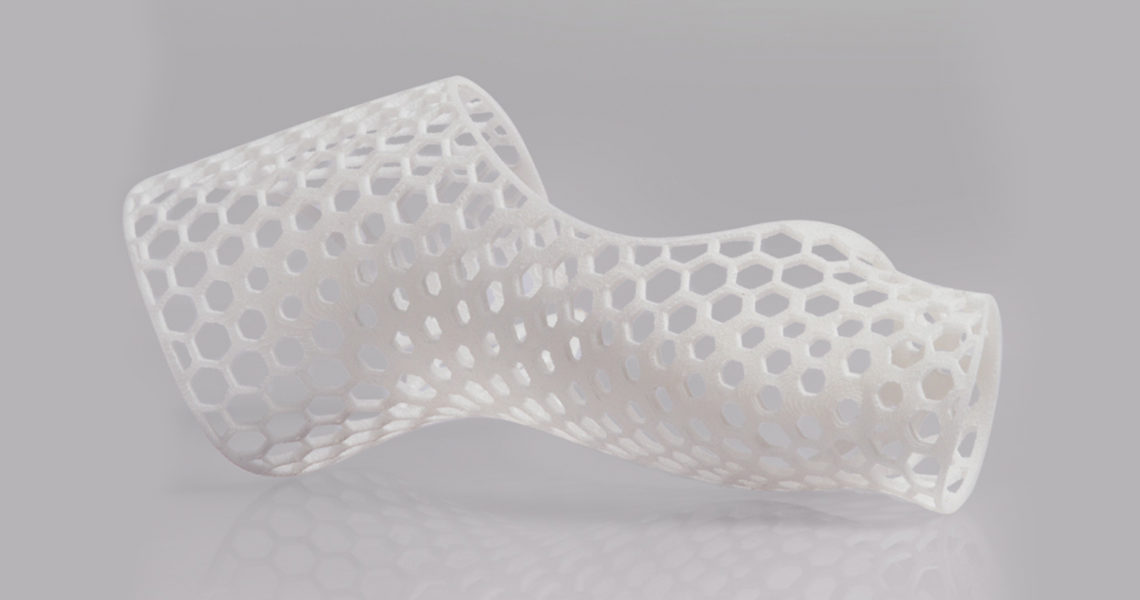
The tedious process of creating comfortable prosthetic limbs is well-researched, but new technology is always around the corner, and 3D printing is slowly making its way into the field of prosthetics. Traditionally, vacuum forming and cast-making have been used to create prosthetic limbs and sockets, but 3D printing is proving to be a viable alternative. Especially when the task is as complex as fitting a prosthesis to a patient, low-volume manufacturing with high accuracy and customizability is favored. Quite a few companies are finding success with 3D printing components for their prosthetic and bionic limb replacements.
Since prosthetics companies and start-ups design 3D-printable prostheses from scratch, there is a design phase that has to occur before a prosthesis can be tested and medically certified. Like any new product, bionics and prosthetics require iterating through many prototypes. Since 3D printing is accurate, affordable, and able to quickly produce quality parts, it is perfect for rapid prototyping.
Prototyping
Research teams make extensive use of 3D printing when creating prostheses and bionics prototypes. Since bionic limb replacements can be complex devices, many tweaks and adjustments need to be made before a final design is reached.
Some prototypes are made to test functionality, and others are made to judge form and aesthetics. Take a prosthetic hand, for example. A functional prototype might aid in testing the motion of the fingers as they clench, while an aesthetic prototype might be used to visualize the overall shape of the prosthesis. For both of these purposes, 3D printing is the perfect prototyping solution. 3D printing allows design teams and researchers to quickly and efficiently crank out the next iteration of their project, making it easier to move their product into production.
After a base design is reached, a prosthesis still needs to be fitted to every patient individually, and this is when the prosthetic socket is required.
What is a Prosthetic Socket?
Prosthetic sockets connect patients to their prosthesis. Sockets are the interface between the skin of the patient and the rest of the prosthesis, so they must be comfortable for the patient while providing rigidity and support.
Sockets are typically designed by qualified prosthetists. Prosthetists are medical professionals who can design sockets that fit comfortably while meeting the specific needs of each patient. Traditionally, producing a socket begins with a lengthy visit with a prosthetist, where measurements are taken and specific needs are addressed. Then over the course of a few weeks, a test socket is created, the fitting is tested by the patient, and then a permanent socket is created based on the feedback from the user, as well as the observations of the prosthetist.
This production process is shifting toward the use of more advanced technologies, such as 3D scanning, in order to more easily capture the complex shape of a patient’s limb.
Custom Manufacturing
3D printing isn’t just good for creating prototypes. Some bionics companies include 3D printed components in their flagship products. For example, Open Bionics has developed a medically certified bionic arm named the “Hero Arm”.
The Hero Arm is a partially 3D printed bionic arm that is fitted to each patient on an individual basis. It allows users to select from a variety of grip patterns and it works by closing its fingers when it senses muscle contractions in the patient’s residual arm tissue.
Since the Hero Arm has to be custom-fitted to each patient, there are some components that need to be custom-made. One of these components is a flexible, ventilated socket that attaches the Hero Arm to the user’s remaining forearm.
Creating a custom 3D printed socket is achieved with a unique approach. Initially, a cast of the patient’s arm is created by a prosthetist. This cast captures every detail and will fit the patient without being too tight or too loose. This cast is then 3D scanned. The 3D scan is then sent to Open Bionics. Designers at Open Bionics will use the 3D scan and computer-aided design (CAD) software to create a custom socket model for each patient. This model is then 3D printed, and attached to the rest of the arm.
Many patients choose to get unique colors, textures, or even superhero designs on their arms, and this is also easily achieved with the help of 3D printing.
Prosthetics for Infants
Most prosthetic limbs are designed for older children, teens, and adults. For infants though, there are currently very few options. Infants and toddlers grow very rapidly, and they’ll quickly outgrow most prostheses. Many children also reject the use of a prosthetic limb, as they can be uncomfortable and frustrating to use. Children with early prosthetics experience will benefit later on because they will retain muscle function in their residual limb. They’ll also more easily adapt to new prosthetics later in life. As a former psychology teacher, Ben Ryan, the founder of Ambionics, knew all about the importance of early prosthesis training. Ben wanted his child Sol (who unfortunately lost most of his left arm) to be able to grow up using a controllable prosthetic hand.
The Ambionics arm is mostly 3D printed. It uses a unique, human-powered hydraulic mechanism, and it is designed for children who are quickly growing. Using 3D scanning technology and 3D printing, new arm sockets can be created and delivered within just a few weeks. This method is accurate and much faster than traditional methods which typically involve a long visit to the prosthetist and over a month of waiting before getting a socket which might not even fit correctly.
Ambionics (now partnered with Glaze Prosthetics) has the goal of delivering affordable, functional prosthetic hands to children and infants.
Looking to 3D print your medical parts? Shapeways offers a variety of materials that are perfect for both prototyping and end-use medical products.


